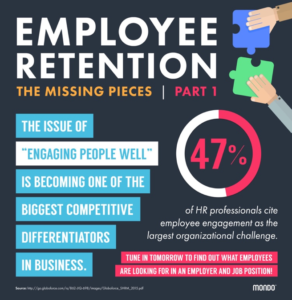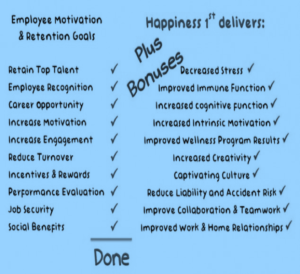Employee Retention
Employee retention has become a major issue of concern for human resources departments and organizations in the USA and the rest of the world. Retaining talented employees is an ongoing battle for organizations. Winning this fight is essential, because the loss of talent means that companies face the challenge of having to employ suitably skilled new staff members every three to six months. This costs many companies a lot of money (life Matters, 2008).
Retaining quality staff is not just a nice idea, it is one of the single biggest factors affecting business success. To a great extent, the success of an organization depends on those employees in whom intellectual capital and corporate memory resides.

Employee retention can be represented by simple statistics (for example, a retention rate of 80% usually indicates that an organization kept 80% of its employees in a given period).
However, another way to think about retention is to view it as the efforts by which employers attempt to retain employees in the workforce. In this sense, retention becomes the strategies rather than the outcome.
So, what are some of these strategies? We will briefly discuss two: Selection and Engagement – both play a crucial role in employee retention and thus, company culture.
Selection and Retention
“Train people well enough so they can leave, treat them well enough so they don’t want to” –Sir Richard Branson
Effective employee retention starts with an effective selection of staff for available positions. The following are important aspects for employers to consider when selecting staff:
- use a multi-rater, multi-method selection process, thus bringing additional minds and diverse viewpoints to the selection process;
- translate your strategy into action by knowing the core functions you need to recruit and train for;
- plan a structured selection process;
- assess applicants objectively and fairly;
- evaluate your selection processes regularly; and
- speak to your staff regularly to check alignment with you and your organization.
Engagement and Retention
The definition for “retain” has two meanings: “to hold or to keep in possession of”, and ”to engage the services of”. High value employees with “hot skills” want to be engaged and not kept! Organizations need to focus on helping employees become fully engaged, rather than trying to just retain them for as long as possible.
The reasons why employees stay with a particular company are closely linked to their own motivation and preferences. Research has shown that the following can have a positive result on employee engagement and, thereby, retention:
- Make sure there are enough resources available to meet
 the demands of the job.
the demands of the job. - Empower employees through training and skill development to meet the job’s standards.
- Allow continuous and “on-demand” training whenever possible.
- Create a culture of ownership where workers feel they are a part of the organization and thus “work for themselves”.
- Ascribe to and clearly communicate a distinct set of values and principles that guide your organization’s day to day work.
- Make sure employees feel challenged by their work.
- Provide opportunities for both individual and team work.
- Reward good work adequately.
- Ensure there is proper communication with, and feedback given, to workers.
- Ensure that employees know the mission of the business and feel they are contributing to that mission with their talents and energy.
What is it that makes employees want to work for and stay with your company? To become a leading-edge employer, you must excel in people leadership, create compelling employment offers, utilize modern and effective selection processes, accelerate the learning and continuous development of your staff, engage your employees regularly, appreciate that culture and values are critically important, and do not under-estimate the value of communication!
Related reading: